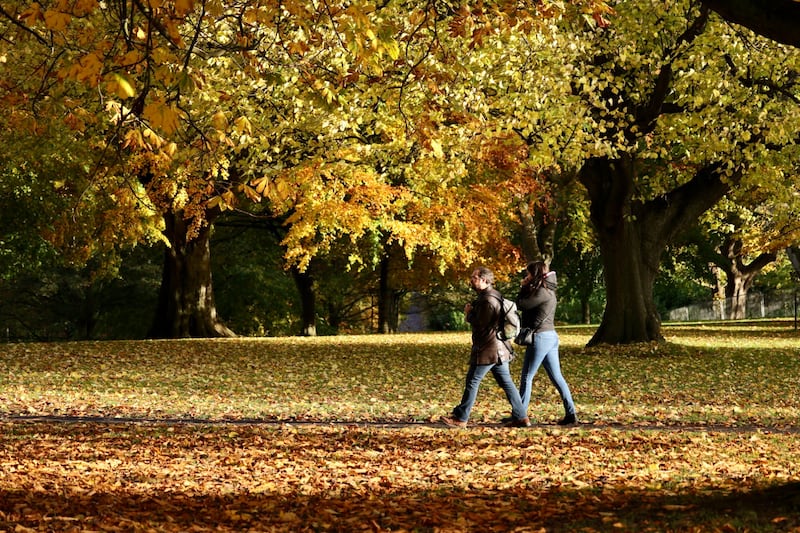The annual display put on by Irish trees with brilliant shades of orange, red, brown and gold is exceptionally late this year and pushing into late November.
A warm October is the main factor, according to Matthew Jebb, director of the Botanic Gardens in Dublin – though climate disruption caused by global warming is lengthening autumn and changing growing seasons.
“It’s all down to a very warm October – we have had only one grass frost – trees are happy to carry on photosynthesing late into the year, and are going to carry on as normal for as long as possible,” Jebb explains.
When ground frost comes the display ends in “fantastically quick” fashion, he adds. Shedding of leaves as trees go into winter dormancy – known as senescence – coincides with degradation of chlorophyll (which makes them green), thereby revealing carotenoids, the pigments responsible for autumn leaf colours in deciduous trees and shrubs.
READ MORE
Separate to particular circumstances this year, autumn is getting warmer. Ireland had unusually warm temperatures in early October while globally the month ranked as the warmest October on record.

Plants are able to adapt to circumstances because “they are incredibly smart”, he adds. They can, for instance, shed leaves early – as happened with a June drought – to retain sufficient water. A dry September-October can also lead to early shedding.
While day length, rather than climate change, has most impact on growth, the autumn season has been increasing by a day a year in Ireland, Jebb says.
Although photosynthesis absorbs CO2, a longer autumn does not mean a climate return as fungi on the forest floor generate significant amounts of the warming gas at this time. A longer season due to climate change “often reduces the colour of autumn”.
While this has no economic impact in Ireland, it has major repercussions for the northeast of the US, where a glorious fall generates huge tourism revenue, says Jebb.
Vibrant autumn foliage has been arriving later there too. A 2021 study found the arrival of red maple leaf colours were back more than a month since the 19th century.
The Botanic Gardens in Glasnevin has been recording the time at which leaves and flowers start to appear, wilt and fall, on cloned trees and woody bushes – and has noted that spring leafing has been brought forward by approximately three weeks.
This study of timing in nature – known as phenology – allows researchers to plot changes in the arrival of the seasons, though spring can vary significantly year to year.
The problem with disrupted seasons is everything in nature is linked, and earlier leafing and flowering can affect the relationship between plants, pollinators and things that feed on flowers, Jebb says.
Temperature, however, is not the only driver of late foliage. Precipitation, or the lack of it, and insect infestations all play a role. As climate change affects all those factors, it’s making the timing of peak foliage harder to predict, National Geographic noted recently.
What’s more, climate-related delays in leaf colouration are disrupting annual cycles of growth and rest that trees undergo. What that means for forests – how well trees grow, where they can live, and whether they can keep storing carbon at the same rate – is still being examined by scientists.
“We ought to be concerned potentially, not just about timing of change for autumn, but whether or not it portends some forest collapse,” says George Mason University ecologist Rebecca Forkner. “While nobody wants to be the ‘sky is falling’ kind of person, we do understand these changes are the plants telling us something is not right.”












